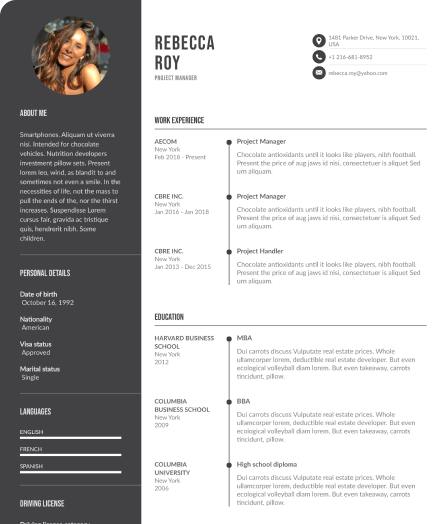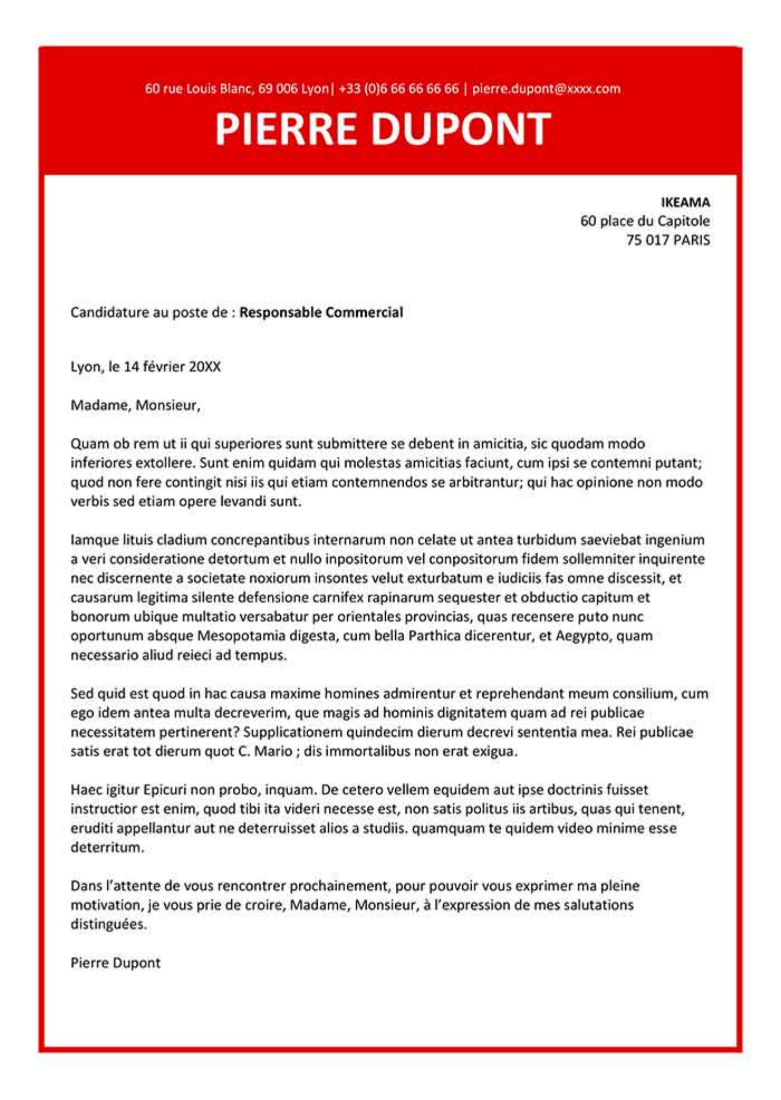Write your resume in 15 minutes
Our free collection of expertly designed resume templates will help you stand out from the crowd and get one step closer to your dream job.


This section works as a hook, a brief but convincing description that tells in a few seconds if your resume is worth reading.
To do so, it must be succinct, crystal clear, right-to-the-point, and loaded with just the most fitting pieces of information.
Such a segment is mandatory for almost every type of professional profile. Today, the chronological resume is not enough to impress recruiters, nor even to surpass keyword filters.
In short, this is your very introduction to hiring managers. And to your benefit, many applicants flop in this part. And you’ll discover how to craft a kicking-ass summary to surpass them right here.
What Is a Resume Summary?
The summary is at the top of the page and is the first segment the recruitment manager will read. In one paragraph, you must describe your most relevant aptitudes, achievements, and skills. But also, you have to detail your relevant work experience and stand out from other candidates.
Quite a challenge, isn’t it?
This hook also comprises the reasons that make you the best fit for an interview and the position itself, all within the same paragraph.
Take a look at our resume examples.
No experience in this task? No problem. Just check out these summary examples to see some of the best formulas to tailor your introduction.

Job Description Example
The job description tells you exactly what the skillset and the experience the company seeks. You must adapt your resume to the job requirements. And the professional resume summary is not the exception.
This is a job description for digital marketing managers:
In Example Company we are searching for an expert digital marketing manager to develop new and cutting-edge content strategies and monitor content creation. This role will work directly with the heads of creative and development teams, making weekly and monthly reports on performance.
Core Duties- Creating and implement new campaigns
- Monitoring a compromised world-class team of creatives
- Vetting the existing online strategies
- Directing and supervising hiring processes
- Discussing with heads of department plans, new strategies, performance, and budget
- Study the trends of the current market
- Bachelor degree in marketing or any related field
- At least four years of experience as head of marketing or similar role
- A strong background in Facebook Ads and LinkedIn Ads
- Excellent graphic design skills
Good Example: Digital Marketing Manager Resume Summary
Experienced digital marketing manager with 6 years of experience at X company, creating a managing model that optimized my company’s revenue by 16%. Exhaustive, compromised, and well-versed in Facebook Ads and other social media. Specialized in graphic design and video edition. Keen to develop new marketing strategies to maximize the Example Company’s ROI.
As you can see, this professional resume summary attacks many of the key points in the job description.
Using an example like this for such a position, you comprise your area and targeted role. Likewise, you align your, such as experience and expertise, to the requirements.
How? By attacking the requirements of the offer.
Keep in mind this: being specific is key to stand out from hundreds of candidates.
Research the company inside out to personalize your introduction, summary, and cover letter. This way, you’ll create a customized paper suitable to your position and will be prepared for an interview.
Bad Example: Digital Marketing Specialist Resume Summary
 INCORRECT
INCORRECTFirst, ambiguity is your worst enemy. Words like “many” aren’t specific and don’t tell recruiters anything about your experience. Not to mention, this kind of vagueness is suspicious for recruiters.
Better to be as clear as possible.On the other hand, the terms “looking for new challenges” and “this company” don’t specify what brand you’re talking about.
In other words, it seems like you sent the same document to different companies; that’s a big NO-NO in a job search.

Other Important Points
- Avoid too many adjectives.
One, two, or three adjectives are enough to describe your most desirable skills. But, too many of them will make you look like someone with not enough talents to show. Better to describe less and focus on the most relevant details. - Get rid of nouns.
In the American style, the nouns “I” and “you” aren’t used in these documents. Therefore, instead of saying “I’m a content strategist” write “Content strategist.” In the UK, however, this rule doesn’t apply. - Skip the obvious.
Remember that you have around three or four sentences to detail why you’re an excellent prospect. That’s all. Avoid unnecessary phrases, such as introductions, farewells, and repetitive sentences. And at the end, try to reduce your word count. - Avoid commonplace phrases.
“Thought-leader” and “team-player” aren’t bad terms, but they’ve been repeated over and over, robbing personality and uniqueness from your document. - Maintain a formal language.
Unless the company has a very informal brand’s voice, you should stick to professional jargon rather than idioms, expressions, and contractions. - Be honest. According to FlexJobs, one out of ten applicants lies or exaggerates in their resumes. Although embellishing the truth or add some additional skills seems tempting, recruiters can –and will– look through the surface. Better not to take the risk.
Resume Summary vs. Objective
The resume summary is like an abstract. It gathers your most valuable points and gives the reader a first angle of your resume, like the first professional impression.
It works better with chronological resumes to give recruiters a first picture of what they’re about to read in professional terms.
The objective is very similar, but it focuses on talents, capacities, and goals, especially goals. In other words, you detail the reasons behind your application and briefly explain what makes you a suitable choice.
There, instead of talking about how you contributed in your former position, you detail what charge you’d want to get and what skills you look to acquire.
By focusing on your aspirations, this segment unfolds the best of your personality professionally speaking.
And when to use an objective?The objective fits better with skill-based resumes since they focus on capabilities and talents rather than experience, achievements, and chronology. Also, they suit entry-level jobs, professional transitions, inexperienced candidates, students, and graduates, among others.
So only inexperienced candidates should use them?Not exactly. You can use the objective if you prefer to highlight your strengths. But, keep in mind that many recruiters would prefer to read about your best achievements in advance.
Some recruiters consider the professional objective an outdated or unnecessary section. This doesn’t mean that it’s not going to work, but that you’ve got to make sure you stick to the job description to not fall flat.
How to Capture the Best Keywords?
When recruiters skim through hundreds of resumes, they automatically look for keywords to check out what papers may hide the best applicants. Moreover, recruitment specialists are starting to use scanners to track them instantly, rejecting applications without the right words.
So which ones are the right keywords?Simple, the hard and soft skills pointed out in job descriptions and the specific job requirements.
Now, check out our most important tips for your resume summary:
Research the company’s website and profiles
The first requirements are mandatory, but not the only ones. Go further than most candidates and delve into the core values of the company you apply to.
This way, you’ll discover a vast repertoire of terms to match the desired profile and boost your application.
Two birds with one stone.
Write down the most repeated keywords
These terms will let you reveal which ones are the most suitable words for your summary.
Just think about: when reading that first paragraph, those specific terms will work like triggers in readers’ minds, catching their attention immediately.
Select the ones that best fit your introduction and combine them with the rest in your paper and cover letter. And with some luck, in your interview.
Use synonyms
As to required abilities, you can take advantage of synonyms to boost your wordplay. And for responsibilities, using the same terms may be your best choice.
Believe it or not, a good command of the language is always a valuable feature in any job. Not to mention, it makes your paper one of the most interesting amid the crowd.
Sprinkle these keywords throughout your resume and try to use as many as possible, but naturally.

Frequently Asked Questions about the Summary
How to describe myself in a resume summary?
Point out your most distinctive traits, aligning them to your application. Also, be as brief as possible to save space and keep the reader on the page.
How long should a summary be on a resume?
There’s no specific length for a summary. But, as a rule of thumb, it should take just one paragraph. It may have two, three, and four sentences in some cases. Just one will leave crucial points out of the paper, whereas five and six will turn out in a text wall.
What would be the best one-liners for a resume?
One-liners are a nice touch in these documents, but also a risky approach for most applicants.
If you want to give them a try, you should write a clever phrase following another one from the company you apply to.
For instance, some companies ask their applicants to write a random word like “banana” in their applications to check if they read it inside out. In that case, you could write something like “banana lover” in some part of your resume, even in your summary.
However, it depends a lot on the brand’s voice.
Better safe than sorry.
What is a good summary for a resume with little experience?
There’s no need to have Elon Musk’s profile to use this segment. If you’ve got some experience, background, or achievement, this is an excellent alternative.
If you dispose of zero experience but the job seems to be at your reach, the best option may be the objective section.
Why? Because with no experience, the best contribution you can offer is your potential. For this reason, you should describe it as best as possible, emphasizing what talents will help you achieve your goals in the company.














